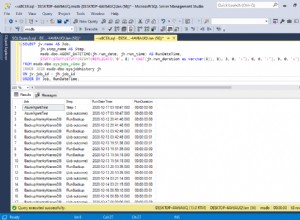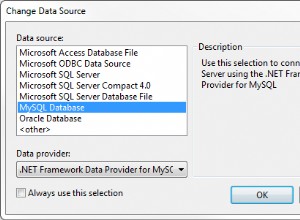Oto rozwiązanie bez for pętla, ale niestety również bez sparametryzowanej instrukcji SQL:
using System;
using System.Collections.Generic;
using System.Diagnostics;
using System.Linq;
public class test {
public static void Main(string[] args)
{
//List<int> listColumns = new List<int>(){ 1, 5, 6, 9};
System.Collections.Generic.List<int> listColumns = new System.Collections.Generic.List<int>(){ 1, 5, 6, 9};
string s = String.Join(", ", listColumns.Select(x => x.ToString()));
string sql = String.Format("SELECT * FROM Table WHERE ID IN ({0})", s);
Console.WriteLine(sql);
}
}
Pamiętaj, że używając select * jest uważana za złą praktykę
edytuj Oto nowy kod, ponieważ Twoja lista ma typ System.Web.UI.MobileControls.List
string sql = String.Format("SELECT * FROM Table WHERE ID IN ({0})",
listColumns.ListItem.Value);
edytuj 2 Wziąłem kod z twojego komentarza:
list.Items.Clear();
string values = DropDownList4.SelectedValue;
string[] words = values.Split(',');
foreach (string s in words)
if (s != "" && s != string.Empty && s != null)
list.Items.Add(s);
Domyślam się, że masz to na liście rozwijanej zmienione wydarzenie czy coś? a twoje menu zawiera w wartości ciąg taki jak „1,5,6,9”. Jeśli wszystkie moje założenia są poprawne, możesz użyć:
System.Collections.Generic.List<int> selectedValues = new System.Collections.Generic.List<int>();
foreach (string s in words)
if (!String.IsNullOrWhiteSpace(s))
selectedValues.Add(Convert.ToInt32(s));
string ids = String.Join(", ", selectedValues.Select(x => x.ToString()));
string sql = String.Format("SELECT * FROM Table WHERE ID IN ({0})", ids);




